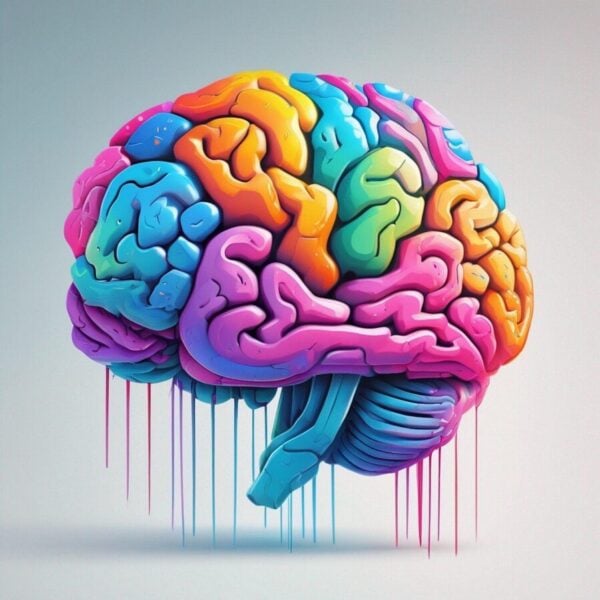The tiny wrinkles covering your brain aren’t just cosmic accidents from cramming too much gray matter into your skull.
New research from UC Berkeley suggests these small grooves might actually be sophisticated neural highways that boost your thinking power. Scientists have discovered that deeper brain folds correlate with stronger connections between reasoning centers and better cognitive performance in children and teens.
The study, published May 19 in The Journal of Neuroscience, challenges long-held assumptions about cortical folding. For decades, neuroscientists viewed these surface dimples as mere byproducts of evolution’s attempt to fit oversized human brains into compact craniums.
Small Grooves, Big Impact
Researchers examined 43 participants aged 7 to 18, using functional MRI scanners to map brain activity during reasoning tasks. They focused on tertiary sulci—the smallest and shallowest grooves that appear last during prenatal development and are uniquely human.
The findings reveal a fascinating connection between anatomy and ability. Participants with deeper tertiary sulci showed increased connectivity between the lateral prefrontal cortex and lateral parietal cortex—brain regions critical for reasoning and high-level thinking.
“The impetus for this study was having seen that sulcal depth correlated with reasoning across children and adolescents,” said Silvia Bunge, professor of psychology and member of UC Berkeley’s Helen Wills Neuroscience Institute.
Beyond Surface-Level Understanding
Think of these grooves like shortcuts in a busy city. The deeper folds may bring brain regions physically closer together, creating shorter communication pathways and faster neural processing. It’s elegant biological engineering disguised as random wrinkles.
Kevin Weiner, UC Berkeley associate professor of psychology and neuroscience, explained the broader implications: “The hypothesis is that the formation of sulci leads to shortened distances between connected brain regions, which could lead to increased neural efficiency, and then, in turn, individual differences in improved cognition.”
This discovery emerged from Weiner’s undergraduate curiosity about his own brain scans. “All I knew was that I had some cortical squiggles that weren’t in the average brain atlases that we had in the lab,” he recalled. That observation launched a 15-year investigation into these overlooked brain features.
Individual Brain Fingerprints
The research reveals striking individual variation in brain folding patterns. Among the study participants, tertiary sulci varied dramatically in size, shape, and depth. Some grooves measured as small as 3 millimeters while others stretched to 7 centimeters.
Key findings from the study include:
- Deeper sulci correlate with increased network connectivity between reasoning centers
- Individual sulci can be distinguished by their unique connectivity patterns
- Sulcal groupings don’t follow simple spatial proximity rules
- Greater groove depth associates with higher network centrality in several brain regions
But here’s where it gets interesting for parents and educators: these patterns aren’t set in stone. The researchers emphasize that brain structure responds to experience throughout development.
Malleable Minds
“Do we think that an individual’s capacity for reasoning is set in stone based on their cortical folding? No!” Bunge emphasized. “Experience, like quality of schooling, plays a powerful role in shaping an individual’s cognitive trajectory, and that it is malleable, even in adulthood.”
This plasticity suggests that while some people may start with advantageous brain architecture, everyone can strengthen their reasoning abilities through learning and practice. The grooves themselves may even deepen or change based on how we use our minds.
Future Applications
Could measuring brain grooves become a diagnostic tool? The researchers believe these anatomical markers might help identify neurodevelopmental disorders or predict cognitive strengths. They’re developing computer programs to help other scientists map these intricate brain landscapes more accurately.
Currently, most brain mapping software identifies only about 35 major sulci. When tertiary grooves are included, that number jumps to over 100 distinct landmarks per brain—creating detailed individual neural fingerprints.
As we unravel these cerebral mysteries, one thing becomes clear: the human brain’s wrinkled surface isn’t just packaging. It’s precision engineering, folded with purpose and primed for thought.
If our reporting has informed or inspired you, please consider making a donation. Every contribution, no matter the size, empowers us to continue delivering accurate, engaging, and trustworthy science and medical news. Independent journalism requires time, effort, and resources—your support ensures we can keep uncovering the stories that matter most to you.
Join us in making knowledge accessible and impactful. Thank you for standing with us!

